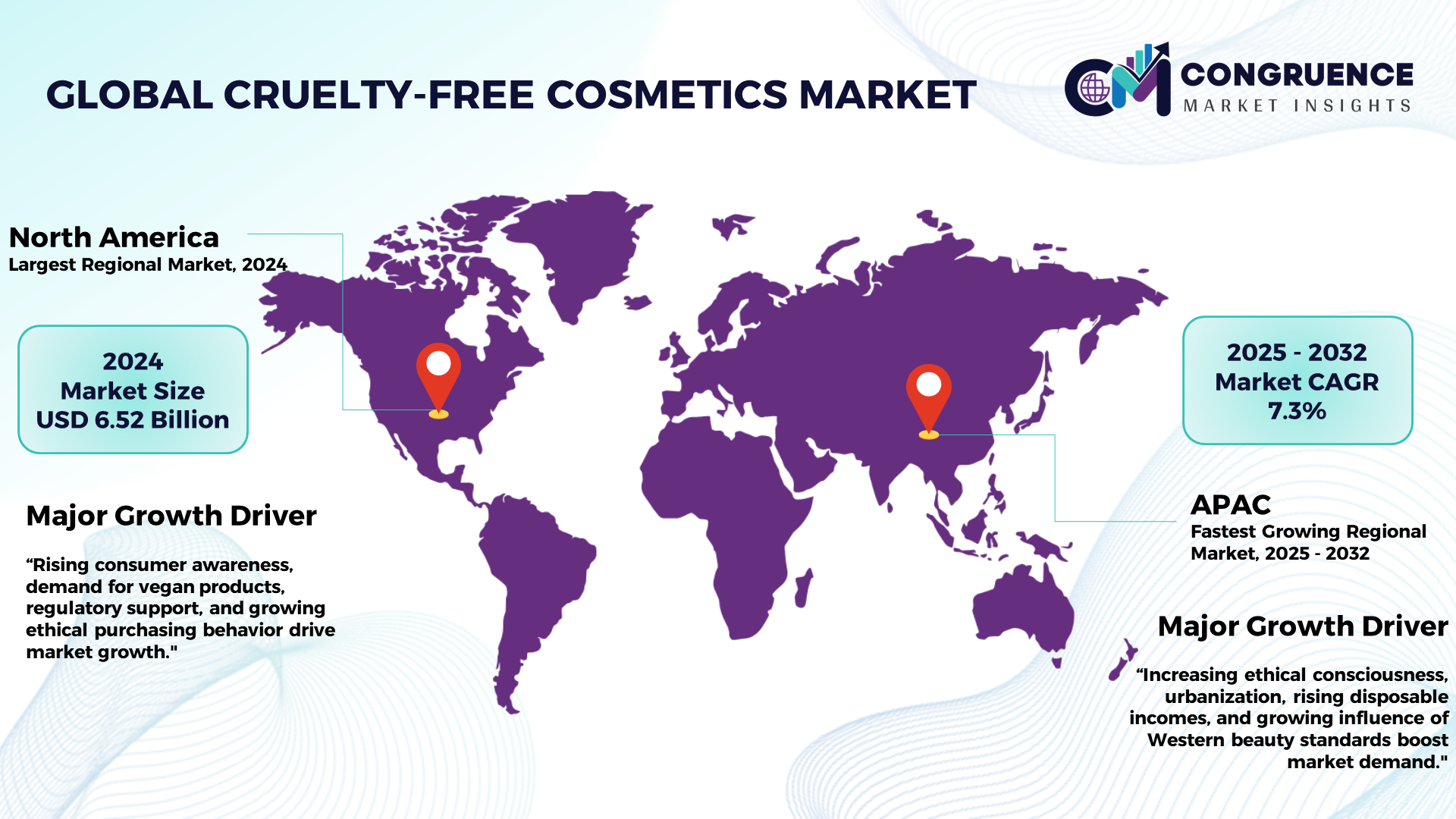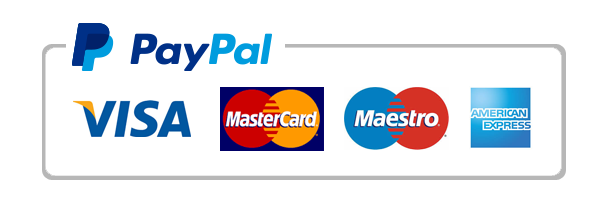Reports
Cruelty-Free Cosmetics Market Size and Forecast 2025 to 2032
The Global Cruelty-Free Cosmetics Market was valued at USD 16.37 Billion in 2024 and is anticipated to reach a value of USD 27.43 Billion by 2032 expanding at a CAGR of 6.7% between 2025 and 2032. While consumers are increasingly looking for cruelty-free and sustainable alternatives, major market players are concentrating on innovation and growth. The global trend toward veganism and eco-consciousness in the beauty industry, along with the impact of social media, have further accelerated market growth.

To Learn More About This Report, Request A Free Sample Copy
Cosmetics and personal care items produced without using animals for testing are known as cruelty-free cosmetics. Customers' growing ethical concerns about animal suffering and regulatory reforms favoring the cessation of animal testing have led to a significant increase in this market. Demand for cosmetics that prioritize ethical sourcing and manufacturing has surged due to consumer preferences for cruelty-free, vegan, and environmentally friendly products. Additionally, cruelty-free cosmetics are becoming more and more accepted in the global beauty industry, and cruelty-free certifications are a key selling point for both established and up-and-coming businesses. The expansion of this industry has been largely attributed to campaigns by groups such as PETA and increased awareness of animal rights on social media. These products, which cater to a broad and more ethical global consumer base, fall into categories such as skincare, haircare, makeup, and fragrances.
How AI is Transforming Cruelty-Free Cosmetics Market
AI is revolutionizing the cruelty-free cosmetics industry by improving supply chain transparency, consumer engagement, and product development. Research and development (R&D) of cruelty-free substitutes is aided by AI-powered technologies, which analyze vast datasets to find synthetic or plant-based components that can take the place of conventional animal-derived additives. This promotes innovation and makes it possible for businesses to create high-performing cosmetics without involving animals. AI-powered consumer analytics also assist businesses in better understanding consumer preferences, customizing recommendations, and adjusting marketing tactics to satisfy the increasing demand for sustainable and ethical products.
AI technologies also increase the traceability and transparency of the supply chain, ensuring that all materials are sourced ethically. AI-enabled blockchain technologies provide customers with up-to-date details on component origins and manufacturing processes, guaranteeing cruelty-free products. AI is also being used to enhance the online shopping experience by offering chatbots, skin analysis tools, and virtual try-ons that boost customer satisfaction while lowering product returns. AI will become more and more crucial as it develops to guarantee that cruelty-free cosmetics live up to consumer standards for both product quality and ethical practices.
Cruelty-Free Cosmetics Market Major Driving Forces
· Rising Ethical Consumerism: More and more customers are weighing ethical considerations, especially those pertaining to animal welfare, when making purchases. Demand for cruelty-free cosmetics is rising as a result of this shift in a number of product categories, such as skincare, makeup, and haircare.
· Stringent Regulations: In some jurisdictions, such as the European Union, governments and regulatory bodies have outlawed or restricted animal experimentation, which leads businesses to create cruelty-free substitutes. One of the main forces behind the industry's growth is this regulatory push.
· Influence of Social Media and Celebrity Endorsements: Public awareness has increased thanks to social media platforms and celebrity and influencer endorsements supporting cruelty-free living. As a result, buying sustainable and animal-friendly products is becoming more and more popular.
· Vegan and Plant-Based Product Innovation: The creation of synthetic and plant-based substitutes for ingredients derived from animals is expanding product offerings while meeting ethical integrity and customer performance requirements. Companies are spending money on research and development to introduce cutting-edge, superior cruelty-free cosmetics.
Cruelty-Free Cosmetics Market Key Opportunities
· Expansion of Vegan Beauty Products: As veganism gains traction, cruelty-free cosmetics companies have a lot of opportunities to introduce entirely vegan product lines. Companies that offer cosmetics that are both cruelty-free and vegan-certified are probably going to draw in a wider range of customers who care more about ethics.
· Emerging markets: As consumer awareness of cruelty-free products rises, markets such as Asia Pacific and Latin America offer substantial potential opportunities. It is anticipated that consumers in these areas will favor high-end, cruelty-free cosmetics as their disposable incomes increase.
· Sustainability and Packaging Innovations: Businesses can differentiate their products and attract eco-aware consumers by using eco-friendly packaging options such as biodegradable materials and refillable containers. Businesses that integrate sustainability goals with cruelty-free policies may be able to take advantage of this expanding consumer base.
· AI and individualized Beauty Solutions: AI-driven products that offer personalized skincare and cosmetic recommendations open up new avenues for brands to interact with consumers while advancing cruelty-free principles. Businesses can now offer highly customized products based on customer preferences thanks to this technology.
Cruelty-Free Cosmetics Market Key Trends
· Leading the charge in the cruelty-free movement are independent beauty brands, which offer distinctive, creative products that rival the industry titans of conventional cosmetics. These companies usually emphasize sustainability, ethical sourcing, and transparency—all of which are highly aligned with consumer values.
· Beauty subscription services are growing in popularity as cruelty-free companies send carefully chosen boxes to customers seeking environmentally friendly and morally sound beauty products. These models promote brand loyalty and ongoing engagement.
· In order to validate their ethical policies, brands are increasingly working with organizations that certify cruelty-free practices, such as PETA and Leaping Bunny. Certifications boost customer confidence and make companies stand out in a crowded market.
· The cruelty-free cosmetics sector is seeing an increase in the use of augmented reality (AR) experiences, AI-powered skin assessments, and virtual try-on tools. These solutions encourage moral beauty choices while also enhancing the user experience.
Region-wise Market Insights
North America accounted for the largest market share at 39.8% in 2024 whereas, Asia Pacific is expected to register the fastest growth, expanding at a CAGR of 7.3% between 2025 and 2032.

To Learn More About This Report, Request A Free Sample Copy
In 2024, the cruelty-free cosmetics market was dominated by North America. The market has grown as a result of the region's stringent laws against animal testing and rising consumer demand for ethical cosmetics. Major beauty brands and retailers in the US are increasingly adopting cruelty-free standards, making the US a major contributor. As a result of local consumer preferences, Canada is also witnessing a rise in demand for cruelty-free and ecologically friendly products.
· In May 2015, L’Oréal partnered with Organovo to bioprint human skin for cosmetic testing, aiming to reduce animal testing. L’Oréal had previously been using human skin models for decades, supplying samples to competitors and pharma companies.
With a projected CAGR of 7.3% over the course of the projection period, Asia Pacific is anticipated to grow at the fastest rate. Due to growing awareness of animal rights and a desire for vegan and natural beauty products, cruelty-free cosmetics are gaining popularity in the area. Nations that have historically mandated animal testing, such as China and India, are switching to alternative techniques and cruelty-free certifications.
The cosmetics industry in Europe is tightly regulated, and animal testing is strictly forbidden. Countries such as the United Kingdom, Germany, and France are at the forefront of promoting ethical beauty products, making this region a significant player in the cruelty-free movement. As awareness and demand rise, emerging markets in Latin America, the Middle East, and Africa offer tremendous growth potential.
Recent Developments
· In July 2024, Avon’s beauty and personal care products were officially declared cruelty-free under the Leaping Bunny Program. This achievement reflects Avon’s commitment to animal welfare, following partnerships with several organizations to help end animal testing.
· In September 2022, Coty expanded its partnership with Cruelty Free International, adding Rimmel, Manhattan, and Risqué brands to the Leaping Bunny Program. This reinforces Coty’s commitment to ending animal testing across the beauty industry.
· In September 2021, Coty announced the relaunch of Kylie Cosmetics with new clean and vegan formulas. The updated products are free from animal-derived ingredients, aiming to meet both sustainability goals and consumer demand for ethical beauty products.
Market Competition Landscape
Established and up-and-coming brands are vying for consumers' attention in the fiercely competitive global cruelty-free cosmetics market. Large companies that have switched to more ethical and sustainable manufacturing methods, as well as brands that have made cruelty-free practices a significant part of their identity, are examples of major market players. These businesses employ eco-friendly packaging, vegan product lines, and cruelty-free certifications as key strategies.
Prominent businesses are also spending money on research and development to introduce innovative formulas that meet strict performance standards without involving any cruelty. This industry is characterized by aggressive marketing campaigns that promote sustainability and ethical beauty, as well as partnerships with animal rights organizations. Businesses that can combine cruelty-free claims with other consumer objectives, such as sustainability and product efficacy, will probably continue to have a competitive edge as the market develops.
Key players in the global cruelty-free cosmetics market implement various organic and inorganic strategies to strengthen and improve their market positioning. Prominent players in the market include:
· L'Oréal
· Unilever (Dove)
· Estée Lauder Companies
· Procter & Gamble
· Coty Inc.
· Avon Products, Inc.
· Urban Decay
· NYX Professional Makeup
· Tarte Cosmetics
· Too Faced Cosmetics
· e.l.f. Cosmetics
· The Body Shop
· Pacifica Beauty
· Milani Cosmetics
|
Report Attribute/Metric |
Details |
|
Market Revenue in 2024 |
USD 16.37 Billion |
|
Market Revenue in 2032 |
USD 27.43 Billion |
|
CAGR (2025 – 2032) |
6.7% |
|
Base Year |
2024 |
|
Forecast Period |
2025 – 2032 |
|
Historical Data |
2020 to 2024 |
|
Forecast Unit |
Value (US$ Bn) |
|
Key Report Deliverable |
Revenue Forecast, Growth Trends, Market Dynamics, Segmental Overview, Regional and Country-wise Analysis, Competition Landscape |
|
Segments Covered |
· By Type (Skincare, Haircare, Makeup, Fragrances, and Others) · By Distribution Channel (Supermarkets/Hypermarkets, Specialty Stores, Online Retail, and Others) · By Nature (Vegan, Organic, Natural, and Others) · By Price Range (Premium, Mid-Range, and Economy) |
|
Geographies Covered |
North America: U.S., Canada and Mexico Europe: Germany, France, U.K., Italy, Spain, and Rest of Europe Asia Pacific: China, India, Japan, South Korea, Southeast Asia, and Rest of Asia Pacific South America: Brazil, Argentina, and Rest of Latin America Middle East & Africa: GCC Countries, South Africa, and Rest of Middle East & Africa |
|
Key Players Analyzed |
L'Oréal, Unilever (Dove), Estée Lauder Companies, Procter & Gamble, Coty Inc., Avon Products, Inc., Urban Decay, NYX Professional Makeup, Tarte Cosmetics, Too Faced Cosmetics, e.l.f. Cosmetics, The Body Shop, Pacifica Beauty, Milani Cosmetics |
|
Customization & Pricing |
Available on Request (10% Customization is Free) |
